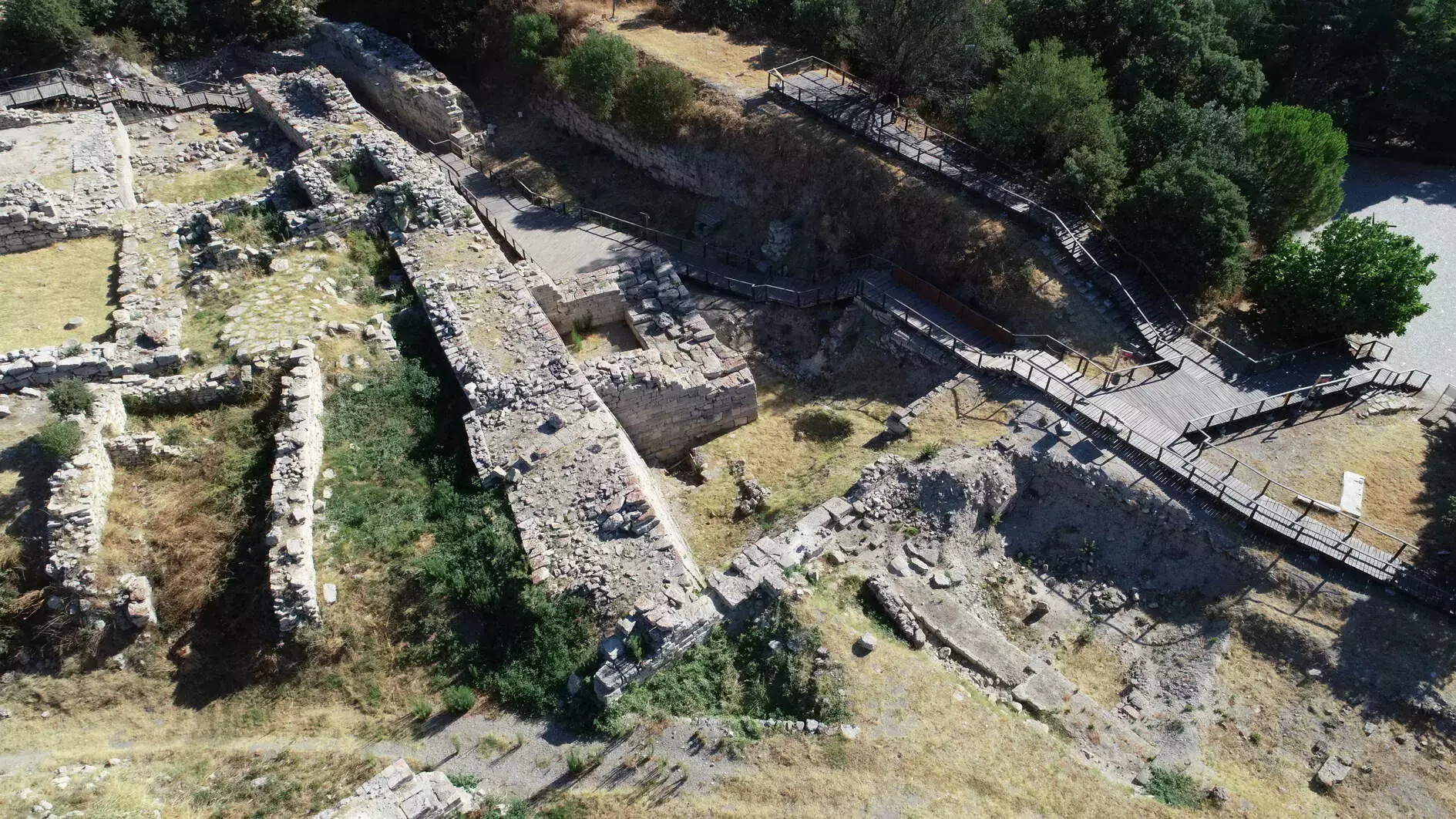Excavations are currently underway to uncover structures in the 5,500-year-old ancient city of Troy, located within the borders of Tevfikiye village in the northwestern province of Çanakkale.
Official excavations in Troy, a UNESCO World Cultural Heritage site, began in 1871, and numerous archaeological discoveries have since come to light through ongoing work.
The excavation team is presently focused on the agora area and the section between the palace structure and the city wall, which dates back to the Late Bronze Age, the period associated with Homer’s Troy.
In an interview with the state-run Anadolu Agency, Reyhan Körpe, an academic professor from Çanakkale 18 Mart University’s (ÇOMÜ) History Department and the vice president of the Troy excavations, explained that Troy, known as “Ilion” in ancient times, was a major tourist destination during the Roman era.
Körpe noted that the fate of Troy, initially a small town at the beginning of the Hellenistic Age, was dramatically altered by the visit of Alexander the Great. “Alexander the Great visited Troy in 334 at the start of his Asian campaign. He was familiar with the Trojan War, had read the ‘Iliad,’ and knew Homer. It is said that he always carried a copy of the ‘Iliad’ with him. When he came here, he saw the dilapidated state of Troy and was deeply moved by it. He promised to revive the city upon his return from the expedition, but he never returned. Later, his generals came and transformed the city, building new temples and structures and renewing the city walls.”
Körpe also mentioned another figure who influenced the fate of Troy: the Roman Caesar. “Caesar visited Troy after a war and promised significant investments because he traced his ancestry to Aeneas, the national hero of Troy. However, he was unable to fulfill this promise because he was assassinated,” Körpe added.
Körpe explained that Augustus, Caesar’s nephew and the founder of the Roman Empire, restored Troy to its former glory.
Emphasizing that Troy became one of the most important and magnificent cities in Asia during the reign of Emperor Augustus, Körpe said, “During his time and afterward, large temples, grand structures, and an Odeon were constructed. In previous excavations, we discovered statues of both Augustus and Hadrian, who visited the city after him, in the Odeon.”
Körpe further noted that during and after Augustus’s reign, Troy became one of the most significant tourist centers in the Mediterranean and Roman worlds.
He pointed out that Roman tourists visited the region because it was believed to be the homeland of their ancestor, Aeneas. “Trojan guides, much like today’s guides, would show them around Troy, pointing out where Aeneas was born, where Aphrodite emerged, where the war took place, and other notable sites,” Körpe added.







